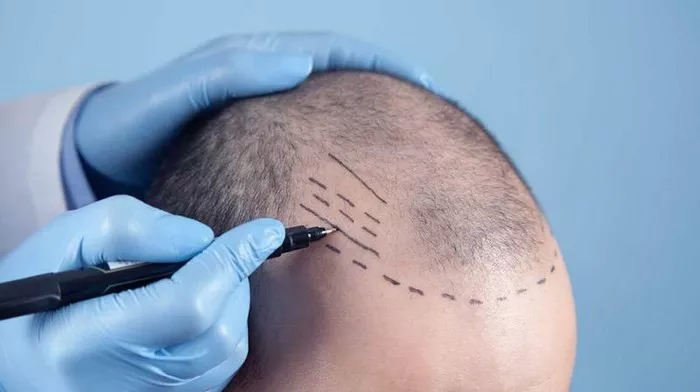The global Laser Hair Loss Treatment Market is on track to experience substantial growth, with projections estimating a market value of $439.5 million by 2032. According to a recent study conducted by USD Analytics, the market, valued at $286.4 million in 2024, is expected to grow at a CAGR of 5.5% over the next eight years. This surge in demand is largely attributed to the growing awareness of hair restoration options and the increasing preference for non-invasive treatments.
Market Overview: Increasing Adoption of Laser Treatments
Laser hair loss treatments are rapidly gaining popularity due to their non-invasive nature and their ability to stimulate hair follicles, encouraging regrowth without the need for surgery or prescription medication. The market is currently dominated by regions such as North America and Europe, where aesthetic treatments are widely accepted. Meanwhile, the Asia-Pacific region is experiencing a rise in demand, driven by growing disposable incomes and an increased interest in personal appearance.
The rapid advancements in laser technology, including the development of portable devices and improvements in clinical-grade effectiveness, are further fueling the growth of the laser hair loss treatment market. Consumers are increasingly turning to lasers as a viable solution to combat hair thinning and loss.
Key Market Drivers
Growing Demand for Non-Invasive Cosmetic Treatments: Laser hair loss treatments are increasingly popular because they offer a painless, convenient, and non-surgical alternative to traditional hair restoration procedures. As people seek out non-invasive solutions to address hair loss, the laser hair treatment market is benefitting from this trend.
Rising Incidence of Hair Loss Linked to Lifestyle Factors: In modern society, lifestyle factors such as stress, poor diets, and pollution are contributing to higher rates of hair loss. This increase in hair thinning problems is driving individuals to explore hair restoration options like laser treatments to regain their hair and confidence.
Improved Efficacy and Safety of Laser Devices: The effectiveness and safety of laser hair treatments have significantly improved over recent years. Advancements in laser technology have resulted in devices that deliver better outcomes with minimal side effects, making treatments more appealing to a broader range of consumers.
Emerging Market Trends
Growth of At-Home Laser Treatment Devices: A notable trend in the market is the rise of home-use laser treatment devices. Consumers are increasingly interested in products that allow them to treat their hair loss in the comfort and privacy of their homes. This growing demand for convenience is expected to contribute to the expansion of the market.
Combination Therapies for Enhanced Results: Clinics are increasingly offering combination therapies to maximize the effectiveness of hair restoration treatments. Laser treatments are being paired with other procedures such as PRP (Platelet-Rich Plasma) therapy and microneedling to deliver enhanced results and accelerate hair regrowth.
Younger Consumers Seeking Early Intervention: The trend of younger consumers proactively seeking treatments for early-stage hair thinning is growing. Many individuals, particularly in their 20s and 30s, are opting for laser hair treatments as a preventive measure to address hair loss before it becomes more severe.
Challenges Facing the Laser Hair Loss Treatment Market
High Costs of Treatment: Despite the advantages of laser treatments, the high cost of procedures remains a significant barrier for many potential customers. Since multiple sessions are often required to see results, the overall cost of treatment can add up, limiting accessibility for some individuals.
Skepticism Regarding Treatment Efficacy: While laser treatments are gaining traction, some consumers remain skeptical about their effectiveness. Concerns about long-term results and whether the treatments are truly sustainable may affect broader market adoption, especially among those with more severe hair loss.
Competition from Alternative Hair Loss Solutions: The market for hair loss treatments is highly competitive, with numerous alternatives available. Products like medications, supplements, and hair transplant surgeries present viable options for consumers, which could create challenges for the laser hair loss treatment sector in terms of market share.
Market Segmentation
The laser hair loss treatment market is segmented by gender and device type, which include:
- By Gender: Men and Women
- By Device Type: Low-level lasers and Medium-level lasers
These segments help paint a clearer picture of the diverse consumer base and technological preferences, providing stakeholders with valuable insights to tailor their strategies and offerings.
Conclusion
The Laser Hair Loss Treatment Market is poised for significant growth in the coming years. As more individuals seek non-invasive and effective alternatives for hair restoration, demand for laser treatments will continue to rise. With ongoing advancements in technology, including portable devices and the integration of combination therapies, the market is expected to expand significantly across various regions, particularly in North America, Europe, and Asia-Pacific.
Despite challenges such as high treatment costs and skepticism about efficacy, the market’s growth drivers—rising demand for non-invasive solutions, advancements in laser technology, and increasing consumer interest—are paving the way for a thriving future in the hair restoration industry.
For more information on market trends, growth patterns, and key business strategies, stakeholders can explore further insights from the USD Analytics study, which provides a comprehensive overview of the Laser Hair Loss Treatment market and forecasts its development through 2032.
Related topics:
- Yale Researchers Develop New Visualization Methods for Afro-Textured Hair
- “It’s Not Just a Haircut”: Knoxville Stylist Supports Flood Victims with Pop-Up Salon
- Dabur to Merge Ayurvedic Hair Care Brand Sesa in ₹325 Crore Deal


